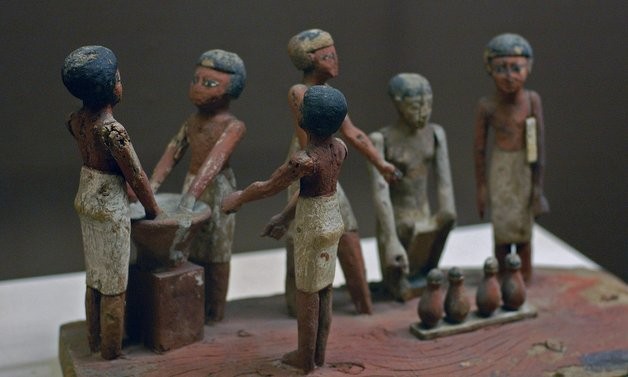How can craft beer help us appreciate the Eucharist?
I don’t mean having a pint before Mass. Rather, I am thinking about one of the craft beer industry’s most creative endeavors: “ancient ales,” as one brewery calls them. These unique beers are made using recipes and methods from hundreds or even thousands of years ago. For instance, ever wonder what they drank at King Midas’ burial feast? After archeologists unearthed drinking vessels left in his tomb (apparently the guests had too much fun to care about cleanup), a biomolecular specialist analyzed traces of residue found in the goblets. A craft brewer seized upon these findings, which indicated the use of Muscat grapes, honey, and saffron in the brew, to create a modern version of the superannuated suds.
Another craft brewery strives to even more literally “re-brew” particular ales, in this case from the pre-Prohibition era. Taking the detailed, hand-written records that original brewers kept for specific batches, these artful technicians mimic the results their predecessors achieved some hundred or two hundred years ago. Thus contemporaries can, according to the head brewer, “reach through the mists of time and pick up exactly where they left off.” Whereas the ancient philosopher Heraclitus asserted that one cannot step twice into the same river, this effort would suggest one can brew the same beer twice.
What do these elixirs have to do with the Eucharist? In surprising ways, what motivates the brewing of these ales corresponds with Catholic understandings of the sacrament. Specifically, we can find a shared interest in memorializing. These craft brewers go to extraordinary lengths to remember the past. They seek to challenge those drinking down these “liquid time capsules” to imagine the history of beer in new ways and with newfound respect. A passion to confirm who and what has come before also drives these brewers. They wish to pay homage and celebrate their indebtedness to various brewing traditions. (The Catholic Church operates according to a similar principle, known as the hermeneutic of continuity). Similarly, the celebration of the Eucharist involves memorializing and making the past present—but in an even bolder way than could be attempted on any brewery floor.
When the Church identifies the Eucharist as a memorial of Christ’s Passion, Death, and Resurrection, she specifies that it is anamnesis (“remembrance”; CCC 1354). This Greek term differs drastically from our common notion of remembering. It suggests a living memory. A remembering that actually “makes present.” At every Mass, Catholics remember the saving events of Christ’s Passion, which began on the evening of Holy Thursday and continued from Good Friday through Easter Sunday, and this paschal mystery is made present in and through the celebration of the Eucharist. This is the power of the sacrament, as instituted by Christ Himself and celebrated by His consecrated ministers ever since. In his encyclical Ecclesia de Eucharistia, Pope Saint John Paul II emphasizes this absorption of past into present: “The Mass makes present the sacrifice of the Cross; it does not add to that sacrifice nor does it multiply it. What is repeated is its memorial celebration… which makes Christ’s one, definitive redemptive sacrifice always present in time” (§12). With ancient ales, craft brewers seek a kind of secular anamnesis. But this does not get at the fullness of the concept in the sacred context. Brewing an imitation of a beer from the historical past—no matter how accurate an imitation it may be—still does not mean I’m drinking what they drank at King Midas’ funeral. With the Eucharist it is a different story. Or rather, it is the same story. In the sacrament, we are consuming the Body and Blood Christ offered up. What He did for our salvation He is still doing (cf. Heb 7:25), and we become participants in it. In this participation lies our hope to share in His eternal glory.
Nor does the making present of Christ’s sacrifice in the Eucharist require historically-specific ingredients the way historical brews do. Importing unleavened bread made from ancient strains of Middle Eastern wheat, or wine from grapevines hugging the trunks of olive trees in Jerusalem, would not draw us into closer proximity with the Last Supper. We have the most authentic Ingredients possible: the power of Christ’s words—the instructions He left at the Last Supper to “do this in memory of me” (Lk 22:19)—and the power of the Holy Spirit to transform bread and wine into Christ’s Body and Blood (CCC 1353). The more we try to remember, and be attentive to the mystery of this encounter, the more we will thirst for it and for Him.
✠
Image: E. Michael Smith Chiefio, “EMS-89615-Rosecrucian-Egyptian-BeerMaking”







